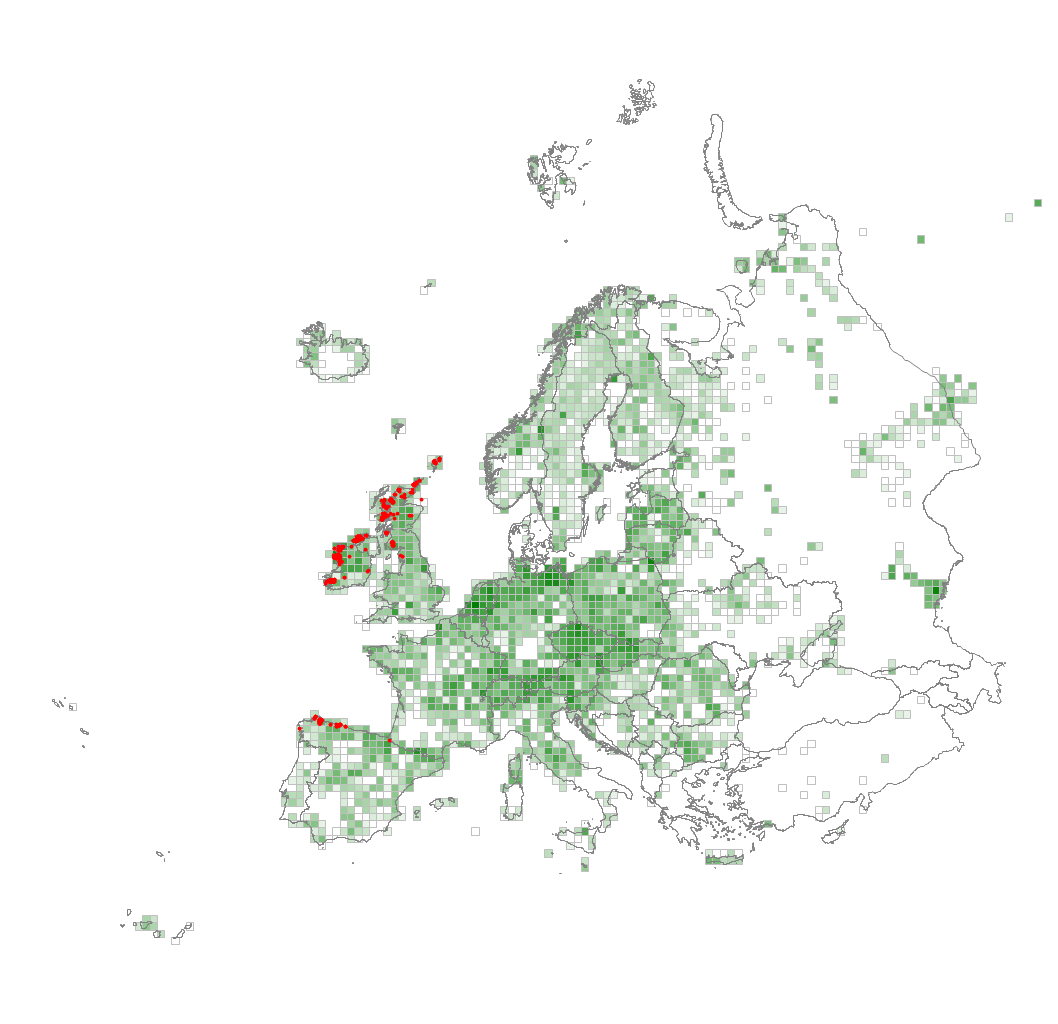Q12 Blanket bog
The mire surface and underlying peat of ombrotrophic peatlands, formed on flat or gently sloping ground with poor surface drainage, in oceanic climates with high rainfall. The mire surface may on flatter ground be very similar to that of a raised bog, with a complex of small pools and terrestrial hummocks. Blanket bogs are a habitat of North-Western Europe, characteristic of the western and northern British Isles, the Faeroe Islands and the western seaboard of Scandinavia with small outliers in France, Portugal and Spain. They often cover extensive areas with local topographic features supporting distinct communities. Sphagna such as Sphagnum compactum, S. papillosum, S. rubellum and S. tenellum play an important role in all of them, accompanied by Calluna vulgaris, Eriophorum angustifolium, E. vaginatum, Molinia caerulea, Narthecium ossifragum, Schoenus nigricans and Trichophorum cespitosum. Blanket bog complexes include dystrophic pools and acidic flushes as well as the mire surface.
Chytrý M., Tichý L., Hennekens S.M., Knollová I., Janssen J.A.M., Rodwell J.S. … Schaminée J.H.J. (2020) EUNIS Habitat Classification: expert system, characteristic species combinations and distribution maps of European habitats. Applied Vegetation Science 23: 648–675. https://doi.org/10.1111/avsc.12519
Version 2025-10-03, https://doi.org/10.5281/zenodo.16895007.
For the official presentation of the EUNIS Habitat Classification from the European Environment Agency, please see: EUNIS Terrestrial Habitat Classification 2021. The FloraVeg.EU presentation may show modifications and partial updates to the habitat classification.
